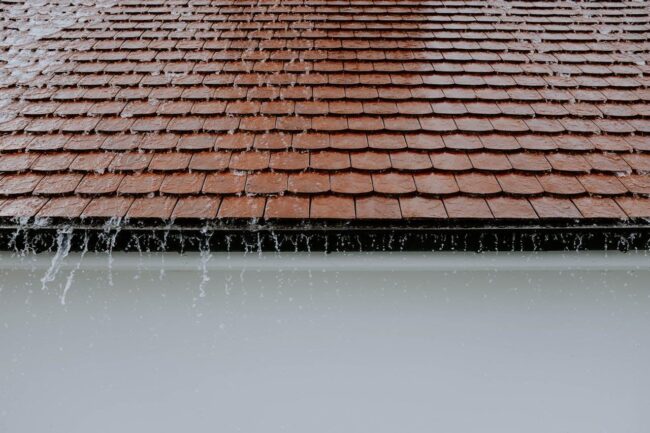
Owning a home is great—until it starts demanding constant maintenance. From plumbing mishaps to structural wear and tear, homes have a way of keeping homeowners on their toes. With housing costs soaring and extreme weather becoming more common, keeping up with home repairs is more important than ever.
Neglecting small issues can lead to bigger, costlier problems. A little leak today can turn into a full-blown disaster tomorrow. But the good news is that most home problems have practical solutions that don’t require a total renovation.
In this blog, we will share the most common home issues, why they happen, and how to fix them before they get out of hand.
Roof Leaks and Water Damage
There’s nothing like the slow, ominous drip of water from the ceiling to send homeowners into a panic. Roof leaks and water damage are among the most frequent and frustrating home problems. They don’t just cause stains on the ceiling—they lead to mold, rot, and expensive structural damage.
Water intrusion usually happens due to aging shingles, poor drainage, or storm damage. In places with unpredictable weather, like hurricanes in Florida or heavy snow in the Midwest, roofs take a beating.
The best way to prevent major damage is regular inspections and quick action. Homeowners should check for missing shingles, clogged gutters, and water stains in the attic. If there’s even a small leak, calling experienced and licensed roofing contractors is the smartest move. Roof issues don’t fix themselves, and waiting too long only makes repairs more expensive.
Another solution? Upgrading materials. Modern roofing materials, such as metal or impact-resistant shingles, can withstand harsh weather better than traditional asphalt. Investing in quality materials can save thousands in future repairs.
Plumbing Nightmares and Hidden Leaks
Ever been startled by an unexpected puddle under the sink? Or worse, a mysterious water bill that suddenly doubles? Plumbing issues range from minor annoyances to full-blown disasters.
The most common problems include:
- Dripping faucets – Wasting water (and money) every second.
- Running toilets – Sometimes using gallons of water a day.
- Pipe leaks – Silent but costly, often damaging floors and walls before they’re detected.
One major reason leaks go unnoticed is aging plumbing systems. Older homes, especially those built before the 1980s, often have pipes that are corroded, weakened, or outdated.
The solution? Regular plumbing checks. Catching small leaks early can prevent a bigger problem. Homeowners should look for wet spots under sinks, bubbling paint, and unusually high water bills. For older homes, repiping may be necessary to avoid future disasters.
And don’t forget clogged drains—a simple fix, but one that can turn into a nightmare if ignored. A mix of grease, hair, and soap scum can slow down or completely block drainage. Using drain screens and avoiding grease disposal in sinks can help prevent these headaches.
HVAC Problems and Poor Insulation
No one thinks about their heating and cooling system—until it stops working on the hottest or coldest day of the year. HVAC breakdowns are one of the most inconvenient and expensive home issues.
Many systems fail because of:
- Dirty filters restrict airflow. When clogged, they force HVAC systems to work harder, increasing energy costs and reducing efficiency.
- Lack of maintenance leads to failing parts. Regular tune-ups help prevent unexpected breakdowns and extend the system’s lifespan.
- Leaky ductwork reduces home efficiency. Gaps or cracks in the ducts let air escape, making it harder to maintain a comfortable temperature.
With extreme weather events becoming more frequent, a well-functioning HVAC system is more important than ever. The best way to prevent issues? Routine maintenance. Replacing air filters every few months, scheduling yearly tune-ups, and ensuring proper insulation can keep the system running efficiently.
Another problem? Poor insulation. A well-insulated home reduces energy bills, keeps temperatures stable, and prevents overworking the entire system. Insulation upgrades may seem expensive, but they pay for themselves in energy savings over time.
Foundation Cracks and Structural Issues
A small crack in the foundation might not seem like a big deal—until it spreads. Foundation issues can lead to sloping floors, stuck doors, and even major structural problems.
Cracks can happen due to:
- Soil movement – Expanding and contracting soil can shift the foundation.
- Water damage – Poor drainage can weaken the ground beneath a home.
- Tree roots – Large roots can push against the foundation over time.
Early signs of foundation problems include cracks in walls, uneven flooring, and doors that won’t close properly. Fixing small cracks with sealant is fine, but large cracks require professional assessment.
To prevent foundation damage, homeowners should maintain good drainage by keeping gutters clean and ensuring that water is directed away from the house. Installing a proper grading system can also help stabilize the foundation.
Pests and Unwanted Guests
Termites, rodents, and other pests can quietly destroy a home before homeowners even realize they’re there. From chewed wires to structural damage, pests are a serious issue.
Common problems include:
- Termites eating through wood structures.
- Mice and rats chewing on wiring and insulation.
- Ants and cockroaches contaminating food and spreading bacteria.
Prevention is key. Sealing cracks, fixing leaks, and keeping food sealed can make homes less inviting to pests. For termite-prone areas, scheduling regular inspections can catch infestations early before major damage occurs.
If pests have already moved in, professional extermination is often the best solution. DIY traps might help for small problems, but larger infestations require expert treatment.
All in all, owning a home comes with plenty of surprises, but being proactive can prevent small issues from turning into costly disasters. From leaky roofs to failing HVAC systems, most problems can be avoided with regular maintenance and quick action.
Staying ahead of repairs isn’t just about saving money—it’s about keeping your home safe, comfortable, and efficient. Whether it’s fixing plumbing issues, upgrading insulation, or handling foundation concerns, a little attention today can prevent a major headache tomorrow.
And when bigger repairs are needed, working with experienced professionals ensures the job gets done right. A well-maintained home isn’t just a place to live—it’s a long-term investment in comfort and peace of mind.
